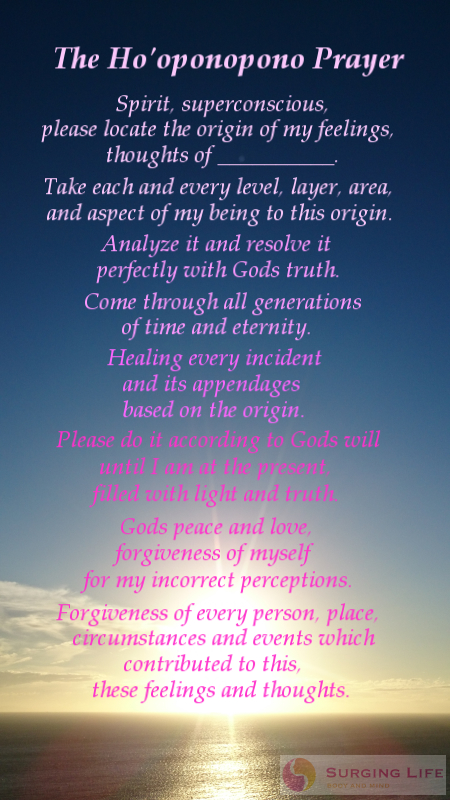Curious to know what Ho’oponopono means in English? Well, you’re not alone! This ancient Hawaiian practice has been gaining popularity in recent years, but its meaning may still be a mystery to some. In the next article, we’ll dive deeper into the meaning behind Ho’oponopono and how it can benefit your life. So, stay tuned to discover the profound wisdom and healing power of this unique Hawaiian tradition. You won’t want to miss it!
Meaning of Ho’oponopono
Definition of Ho’oponopono
Ho’oponopono is a traditional Hawaiian practice that focuses on forgiveness, reconciliation, and healing. The word itself can be broken down into “ho’o” meaning to create, “pono” meaning harmony and balance, and “ponopono” meaning to make doubly right. Therefore, Ho’oponopono can be understood as a process of making things right, both externally and internally.
Origin of Ho’oponopono
Ho’oponopono has deep roots in Hawaiian culture and has been practiced by the native Hawaiians for generations. It was traditionally facilitated by a Kahu, a spiritual elder or healer, who guided the participants through the process of resolving conflicts and restoring harmony within relationships, families, and communities.
Cultural significance of Ho’oponopono
In Hawaiian culture, relationships are highly valued, and Ho’oponopono serves as a means of strengthening and maintaining these connections. It is seen as a sacred practice that promotes forgiveness, understanding, and unity among individuals. Ho’oponopono also emphasizes personal responsibility, encouraging individuals to take ownership of their actions and their impact on others.
Principles of Ho’oponopono
Concept of forgiveness
At the core of Ho’oponopono is the concept of forgiveness. It recognizes that holding onto grudges, resentment, and anger creates disharmony and blocks the flow of love and compassion. By forgiving oneself and others, individuals can release negative emotions, heal relationships, and restore balance within themselves and their surroundings.
Taking responsibility for one’s actions
Ho’oponopono encourages individuals to take responsibility for their actions, words, and thoughts. It emphasizes the understanding that we are all interconnected and that our actions have a ripple effect on others. By acknowledging our role in creating disharmony and taking responsibility, we can actively work towards resolution and healing.
Letting go of negative emotions
Another key principle of Ho’oponopono is the practice of letting go of negative emotions. By releasing feelings of anger, hurt, and resentment, individuals can free themselves from the burdens of the past and create space for healing and transformation. This process allows for the cultivation of inner peace, acceptance, and love.

Ho’oponopono Practices
Meditation and prayer
Meditation and prayer are integral components of Ho’oponopono. These practices provide individuals with a space to connect with their inner selves and with a higher power. During meditation, one can focus on healing and forgiveness, visualizing the release of negative emotions and the restoration of harmony. Prayers are also said to invoke the assistance and guidance of spiritual beings.
Repeating healing phrases
One common Ho’oponopono technique involves the repetition of healing phrases, or mantras. The most well-known mantra is: “I’m sorry. Please forgive me. Thank you. I love you.” By repeating these phrases, individuals express remorse, seek forgiveness, express gratitude, and cultivate love and compassion. The power of the spoken word is believed to have a transformative effect on one’s inner state and external reality.
Visualization techniques
Visualization techniques are also employed in Ho’oponopono to facilitate healing and transformation. Individuals can visualize themselves and others enveloped in a healing light, releasing and letting go of negative emotions. This visualization can help to create a sense of peace, healing, and reconciliation within oneself and in relationships with others.
Benefits of Ho’oponopono
Promotes inner peace
A primary benefit of practicing Ho’oponopono is the cultivation of inner peace. By releasing negative emotions, letting go of past grievances, and fostering forgiveness, individuals can experience a profound sense of peace, tranquility, and well-being. This inner peace has a positive impact on both mental and physical health, supporting overall well-being.
Improves relationships
Ho’oponopono is particularly valuable in improving relationships. Through the practice of forgiveness, resolution of conflicts, and taking responsibility for one’s actions, individuals can restore balance and harmony in their relationships. This leads to better communication, increased understanding, and stronger connections with others.
Reduces stress and anxiety
Practicing Ho’oponopono can also be beneficial in reducing stress and anxiety. By releasing negative emotions and cultivating a state of forgiveness and compassion, individuals can alleviate the burden of stress and anxiety that often result from holding onto grudges and resentments. This, in turn, improves mental and emotional well-being.

Ho’oponopono and Self-Healing
Healing past traumas
Ho’oponopono can be a powerful tool for healing past traumas. By acknowledging the impact of these traumas on one’s life and relationships, individuals can work towards releasing the associated pain and negative emotions. Through forgiveness and self-compassion, individuals can find healing and move forward with greater peace and resilience.
Releasing limiting beliefs
Limiting beliefs are deeply ingrained patterns of thinking that hold individuals back from realizing their full potential. Ho’oponopono encourages individuals to examine and release these limiting beliefs, allowing for personal growth and self-transformation. By letting go of self-imposed limitations, individuals can create new positive narratives and empower themselves.
Activating self-love and compassion
Ho’oponopono emphasizes the importance of self-love and compassion. By forgiving oneself, treating oneself with kindness, and letting go of self-judgment, individuals can cultivate a sense of self-worth and acceptance. This self-love and compassion lay the foundation for healthy relationships with others and support ongoing personal growth and well-being.
Ho’oponopono in Daily Life
Applying forgiveness in relationships
One practical application of Ho’oponopono in daily life is to apply forgiveness in relationships. By recognizing when conflicts arise and actively working towards resolution and forgiveness, individuals can foster healthier, more harmonious connections. This includes forgiving oneself for past mistakes and taking responsibility for one’s actions in order to create positive change.
Cultivating gratitude and appreciation
Another way to incorporate Ho’oponopono into daily life is by cultivating gratitude and appreciation. By acknowledging and expressing gratitude for the positive aspects of life, individuals can shift their focus away from negativity and foster a mindset of abundance and positivity. This mindset supports healing, personal growth, and the cultivation of inner peace.
Finding harmony within oneself
Ho’oponopono also encourages individuals to find harmony within themselves. This involves self-reflection, mindfulness, and meditation to identify areas of imbalance and disharmony. By addressing and resolving these internal conflicts, individuals can create a sense of inner peace and alignment, which positively impacts all aspects of their lives.

Criticism and Skepticism
Controversies surrounding Ho’oponopono
Ho’oponopono has faced criticism and controversy, particularly in relation to its commercialization and appropriation outside of the Hawaiian culture. Some argue that by commercializing Ho’oponopono, its traditional and spiritual significance has been diluted, and its practices have been misinterpreted or misused. It is important to approach Ho’oponopono with respect and understanding of its cultural origins.
Scientific evidence and studies
Scientific evidence supporting the effectiveness of Ho’oponopono is limited. While anecdotal accounts claim positive outcomes from practicing Ho’oponopono, more rigorous scientific studies are needed to validate its therapeutic value. However, the power of forgiveness, meditation, and self-reflection, which are central to Ho’oponopono, are well-documented in other healing modalities.
Respecting cultural appropriation
Given its cultural roots, it is essential to approach Ho’oponopono with cultural sensitivity and respect. It is crucial to understand and honor the traditional practices of Ho’oponopono instead of appropriating or commercializing them. Treating Ho’oponopono with reverence and seeking guidance from qualified practitioners who hold the cultural knowledge is important to maintain its integrity.
Practicing Ho’oponopono Safely
Seeking guidance from a qualified practitioner
To practice Ho’oponopono safely, it is advisable to seek guidance from a qualified practitioner, particularly one who has a deep understanding of the cultural traditions and protocols associated with the practice. A qualified practitioner can provide instruction, support, and ensure that the practice is conducted with respect and integrity.
Understanding personal boundaries
It is essential to understand and respect personal boundaries when practicing Ho’oponopono. Each individual’s healing journey is unique, and it is important to prioritize self-care and personal well-being. If certain aspects of the practice feel uncomfortable or triggering, it is important to communicate those boundaries and adjust the practice accordingly.
Integrating Ho’oponopono with other healing modalities
Ho’oponopono can be integrated with other healing modalities to enhance its effectiveness. It can complement practices such as therapy, mindfulness, and energy work. By combining different approaches, individuals can create a holistic healing experience that addresses various aspects of their well-being.

Ho’oponopono Misconceptions
Releasing the idea of instant miracles
One common misconception about Ho’oponopono is the expectation of instant miracles or quick fixes. While Ho’oponopono can be a powerful practice for healing and transformation, it is important to approach it with patience and realistic expectations. Personal growth and healing are ongoing processes, and it takes time and consistent practice to experience lasting change.
Acknowledging the importance of personal growth
Ho’oponopono is not just about resolving external conflicts or seeking forgiveness from others. It also requires individuals to take responsibility for their own personal growth and self-improvement. By acknowledging and working on areas of personal growth, individuals can create positive changes within themselves and their relationships.
Balancing spirituality and practicality
Ho’oponopono is a spiritual practice, but it is also important to balance spirituality with practicality. While the practice encourages connecting with a higher power, it also emphasizes taking practical steps towards healing and resolution. This includes engaging in honest communication, making amends, and actively working towards creating positive change in one’s life.
Conclusion
Embracing Ho’oponopono as a tool for healing and self-transformation can have profound effects on our lives. By understanding the meaning and principles of Ho’oponopono, practicing forgiveness, and cultivating self-love and compassion, we can experience inner peace, improved relationships, and reduced stress and anxiety. It is important to approach Ho’oponopono with respect, seek guidance from qualified practitioners, and integrate it with other healing modalities to create a holistic and balanced approach to well-being. Through its practice, we can continue to heal, grow, and strive towards lifelong well-being.

